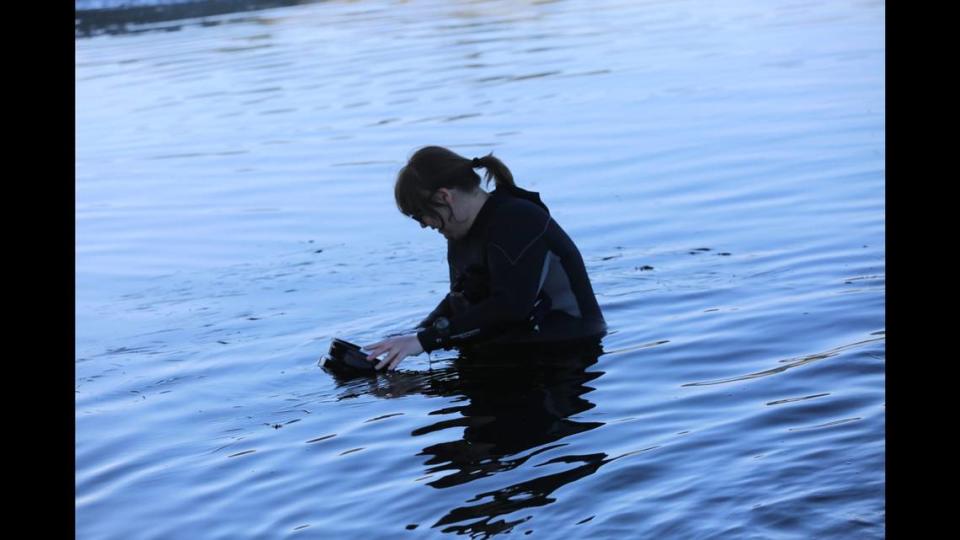‘Unprecedented’ find on Oregon coast offers ‘glimmer of hope’ for endangered sea star
Staff from an aquarium were searching an Oregon bay for fish and invertebrates when they spotted something in the water.
There, along the sandy floor of Yaquina Bay, sat a sunflower sea star, considered a critically endangered species by the International Union for Conservation of Nature, the Oregon Coast Aquarium said in a June 8 news release.
“We have to document this,” aquarist Tiffany Rudek said, according to the release, while putting the star in a bucket.
“Hearts soared,” the aquarium said.
Then, just moments later, another aquarist beside Rudek pointed a “neoprene-gloved finger at a second many-armed star just below the water’s surface,” the aquarium said.
The group continued searching the sandy channel and finding more and more of the species, with each find “being met with cheers,” according to the aquarium.
By the end of their search, they had found 25 sunflower sea stars, the aquarium said.
“To come across not one, but 25 sunflower stars?” Rudek said. “It’s incredible. It’s unprecedented. I am so excited about what this could mean for the species.”
Outbreak decimates population
Sunflower sea stars, native to the northeast Pacific Ocean, are considered a “keystone species,” the aquarium said.
As “voracious predators,” the species is crucial to “keeping urchin populations in check,” preventing them from destroying kelp forests that “serve as vital nursery habitat for marine life,” according to the aquarium.
The species, however, was “decimated by an outbreak of Sea Star Wasting Syndrome (SSWS) that hit the Pacific Coast between 2013 and 2017,” the aquarium said.
While similar outbreaks have happened in decades past, “none had impacted the species on such a massive scale,” the aquarium said.
The disease claimed 90% of the sunflower sea star population, the National Oceanic and Atmospheric Administration estimates, according to the aquarium.
‘Glimmer of hope’

The aquarium said Rudek has been working to create “an effective treatment for sea stars impacted by stress, injury, or disease—including those suffering with SSWS symptoms.”
The first sunflower sea star staff found measured just 3 inches across with “12 arms working in concert, pulling its sinewy yet boneless body over the ocean floor with surprising speed,” the aquarium said.
“While this one was still small, when fully grown a sunflower star can reach up to four feet across and have as many as 26 arms,” the aquarium said.
The largest staff found measured 6 inches across, the aquarium said. It may have been the adult that spawned the smaller nearby sea stars.
The large number of “juvenile sunflower stars may be a precursor of the species’ recovery, though only time will tell,” the aquarium said.
It is a find, nonetheless, that offers a “glimmer of hope” for the species, according to the aquarium.
Yaquina Bay is about 100 miles northwest of Eugene.
Huge ‘brilliant’ creature found on California beach likely died of old age. See photos
Male seadragon makes history at CA aquarium with arrival of more than 70 newborns
Pregnant male seadragon makes history at CA aquarium. ‘An extremely rare occurrence’

